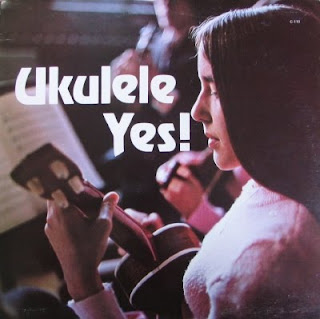
Aloha!
I promise to get off the ukulele kick pretty soon. If you want to take up the ukulele, finding the right one might be a bit puzzling, so I thought I would put some information together so you know what you are looking at when you go shopping for one.
And shopping is probably your best bet, as playable ukuleles are pretty cheap, so renting one is probably not the greatest idea. Keep in mind that the ones you buy at Hilo Hattie’s or the ABC store for 10 bucks are not playable.
Most ukuleles have four strings, and that is what you should look for. There are some with 6 strings and others with 8 strings (doubled courses) which really sound neat, but would be frustrating to learn on. 
Then comes the decision of which size of ukulele to purchase. There are four common sizes: soprano, concert, tenor and baritone. Playability, tone and volume will vary a bit depending on which size you choose. I will cover the four sizes in order, from smallest to largest.
The soprano is the original ukulele size, and is sometimes called the "standard ukulele" in Hawaii. These are usually tuned to reentrant G-C-E-A, but there is an alternate D-tuning of A-D-F#-B, which brings out a really sweet Hawaiian tone. This little uke is only about 21 inches long, making a perfect companion for airline travel. No BS – as I write this I am flying across the country with my soprano uke in the overhead bin. The smaller size has a few drawbacks, one being less bass and volume, and the other being a very short scale (13”), so the frets are closer together. 
The next size up, the concert ukulele, was first built in the 1920s, and was designed to provide more volume with enhanced bass tones. They are about 23” long, with a 15” scale. These ukes most always use the same C tuning as the soprano models (G-C-E-A), but sometimes player will take the G an octave lower to provide a more full tone.
Short after the concert ukuleles gained popular acceptance, builders began producing tenor models. These are bigger yet, with a 26” overall length and a 17” scale. This is my favorite size to play, with a richer tone, and frets a little bit farther apart. These are often use C tuning like the soprano and concert models, but some players will tune them to D-G-B-E, so they can function more like a baritone uke.
Lastly, in the 1940s the baritone ukulele was introduced. At 30” long these are a lot easier to play with a 19” scale. I have only seen these tuned to D-G-B-E, low to high. 
For learning, I would recommend a concert or tenor ukulele. Having the frets a little farther apart helps those of us with larger fingers get around the fingerboard a little better. Beginners might want to stay clear of baritone ukuleles, as the more guitar-like tuning does not provide the same distinctive Hawaiian ukulele tone.
You should also have some knowledge of the different construction material options. Maccaferri made a metric ton of plastic ukuleles after WWII. You do not want one. More affordable ukuleles are usually made of wood laminates (think fancy plywood), while more expensive instruments are constructed of solid hardwoods, such as mahogany or koa/acacia. Whatever you get, do not pick one with a light-colored spruce top. The look is totally wrong for the ukulele, and kills its Hawaiian flavor.
The last part of the equation is whether you want electronics. Most people are satisfied with the acoustic sound, but if you are going to be playing out, you might want to consider buying a ukulele with a pickup. It is a lot easier to plug it into an amp than to mike the instrument properly. BTW, a few uke converts I know who came from the electric guitar side love running it through effects, so the pickup was a good upgrade for them.
You will find reasonable quality ukuleles made of laminate materials for a little under $100. For a solid hardwood uke, you will spend at least a few hundred dollars. For real high-quality instruments you can spend thousands. 
Check prices online (Amazon is a good source) and then find a local shop that carries ukuleles. The best shops are the ones that have a large selection of acoustic guitars, as they usually have a staff that is knowledgeable about their ukulele stock. Stay away from Guitar Center or Sam Ash, as you will be hard-pressed to find anybody there that knows dick about ukuleles. Plus, with a smaller shop you will be more likely to get help if you ever have problems, or if you cannot figure out how to replace your strings.
As far cases go, you can probably get by with a soft case for a cheaper ukulele unless you are going to be travelling with it. If you have an expensive uke, or if you are going to be stuffing it in overhead bins, you might want to spend 40 or 50 bucks and get a hard case. Be wary of salesmen and check online prices before buying the case. Sometimes they will give you a great deal on the uke and mark the case up quite a bit to get a little more profit.
I will give you my recommendation for a good starter ukulele in my next blog post.
Mahalo!





No comments:
Post a Comment